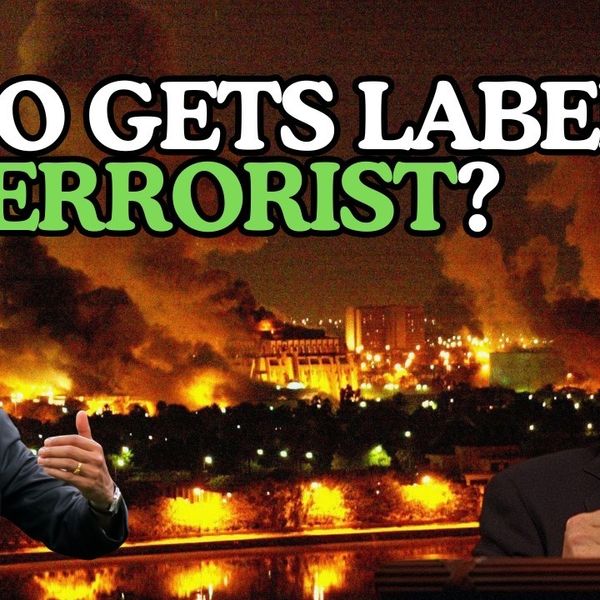The events of recent days are unprecedented. The last time units of Jewish and Palestinian fighters — military or paramilitary — went to battle on such a broad front in Israel-Palestine was in 1948. There have, of course, been various battles over the years in Gaza as well as West Bank cities like Jenin, and Israeli and Palestinian units fought one another in Lebanon in 1982. But there is no parallel to the scope of what has taken place here since Saturday morning, and not since 1948 have Palestinian fighters occupied Jewish communities on this scale.
This fact is not just a historical anecdote; it has a direct political meaning. This murderous and inhumane attack by Hamas arrived just as it seemed Israeli Prime Minister Benjamin Netanyahu was about to complete his masterpiece: peace with the Arab world while completely ignoring the Palestinians. This attack has reminded Israelis and the world, for better or for worse, that the Palestinians are still here, and that the century-old conflict here involves them, not the Emiratis or the Saudis.
In his speech at the UN General Assembly two weeks ago, Netanyahu presented a map of “The New Middle East,” depicting the State of Israel stretching from the Jordan River to the Mediterranean Sea and building a “corridor of peace and prosperity” with its neighbors across the region, including Saudi Arabia. A Palestinian state, or even the collection of shrunken enclaves that the Palestinian Authority ostensibly controls, does not appear on the map.
Since he was first elected prime minister in 1996, Netanyahu has tried to avoid any negotiations with the Palestinian leadership, instead choosing to bypass it and push it aside. Israel does not need peace with the Palestinians to prosper, Netanyahu repeatedly claimed; its military, economic, and political strength is sufficient without it. The fact that during the years of his rule, especially between 2009 and 2019, Israel experienced economic prosperity and its international status improved, was, in his eyes, proof that he is following the right path.
The Abraham Accords signed with Bahrain and the United Arab Emirates, and later also Sudan and Morocco, reinforced this belief conclusively. “For the past 25 years, we have been told repeatedly that peace with other Arab countries will only come after we resolve the conflict with the Palestinians,” Netanyahu wrote in an article in Haaretz before the last election. “Contrary to the prevailing position,” he continued, “I believe that the road to peace does not go through Ramallah, but bypasses it: instead of the Palestinian tail wagging the Arab world, I argued that peace should begin with Arab countries, which would isolate Palestinian obstinacy.” A peace agreement with Saudi Arabia was supposed to be the icing on the “peace for peace” cake that Netanyahu has spent years preparing.
Netanyahu did not invent the policy of separation between Gaza and the West Bank, nor the use of Hamas as a tool to weaken the Palestine Liberation Organization and its national ambitions to establish a Palestinian state. Then-Prime Minister Ariel Sharon’s 2005 “disengagement” plan from Gaza was built on this logic. “This whole package called the Palestinian state has fallen off the agenda for an indefinite period of time,” said Dov Weissglas, Sharon’s advisor, explaining the political goal of disengagement at the time. “The plan provides the amount of formaldehyde required so that there will be no political process with the Palestinians.”
Netanyahu not only adopted this way of thinking, he also added to it the preservation of Hamas rule in Gaza as a tool for strengthening the separation between the strip and the West Bank. In 2018, for example, he agreed that Qatar would transfer millions of dollars a year to finance the Hamas government in Gaza, embodying the comments made in 2015 by Bezalel Smotrich (then a marginal Knesset member, and today the finance minister and de facto West Bank overlord) that “the Palestinian Authority is a burden and Hamas is an asset.”
“Netanyahu wants Hamas on its feet and is ready to pay an almost unimaginable price for it: half the country paralyzed, children and parents traumatized, houses bombed, people killed,” Israel’s current information minister, Galit Distel Atbaryan, wrote in May 2019, when she was yet to enter politics but was known as a prominent Netanyahu supporter. “And Netanyahu, in a kind of outrageous, almost unimaginable restraint, does not do the easiest thing: getting the IDF to overthrow the organization.
“The question is, why?” Distel Atbaryan continued, before explaining: “If Hamas collapses, Abu Mazen [Mahmoud Abbas] may control the strip. If he controls it, there will be voices from the left that will encourage negotiations and a political solution and a Palestinian state, also in Judea and Samaria [the West Bank] … This is the real reason why Netanyahu does not eliminate the Hamas leader, everything else is bullshit.”
Indeed, Netanyahu himself had effectively admitted as much a couple of months before Distel Atbaryan made her comments, when he declared in a Likud meeting that “anyone who wants to thwart the establishment of a Palestinian state needs to support strengthening Hamas. This is part of our strategy, to isolate Palestinians in Gaza from Palestinians in Judea and Samaria.”
Strengthening the Gaza fence became another aspect of Netanyahu’s strategy. “The barrier will prevent terrorists from infiltrating our territory,” Netanyahu explained when he announced the start of work in 2019 to add an underground barrier that would end up costing more than NIS 3 billion. Two years later, Israeli journalist Ron Ben-Yishai wrote in Ynet that the ultimate goal of the fence, which was considered to be an impenetrable barrier for terrorists, is to “prevent a connection between Hamas in Gaza and the Palestinian Authority in Judea and Samaria.”
On Saturday morning, that fence was torn down, and with it the broader Netanyahu doctrine — adopted by the Americans and many Arab states — that it is possible to make peace in the Middle East without the Palestinians. As hundreds of militants crossed the border unhindered on their way to occupy army posts and infiltrate dozens of Israeli communities as far as 18 miles away, Hamas declared in the most clear, painful, and murderous way possible that the conflict that threatens Israelis’ lives is the conflict with the Palestinians, and the idea that they can be bypassed via Riyadh or Abu Dhabi, or that the 2 million Palestinians imprisoned in Gaza will disappear if Israel builds a sufficiently elaborate fence, is an illusion that is now being shattered at a terrible human cost.
This is not necessarily good news. It is impossible not to define the actions of Hamas as war crimes: the massacre of civilians, the murder of entire families in their homes, the kidnapping of civilians including the elderly and children into captivity in Gaza — all of these violate the laws of war, and if the International Criminal Court does exercise its jurisdiction over Israel-Palestine, then those responsible for these actions will have to be prosecuted. In other words, Hamas’ “declaration” that the Israeli-Palestinian conflict still exists came at the price of the blood of hundreds of innocent people.
It is also not necessarily good news because it seems that the conclusion Israel is currently drawing from the understanding that the conflict is here in Israel-Palestine, and not in Saudi Arabia, is to “overthrow Hamas” or “flatten Gaza.” Likud MK Ariel Kellner and right-wing journalist Yinon Magal likely represent a significant portion of the Israeli public — and certainly the government — when they call for the response to be another Nakba.
And yet, beyond the moral judgments, the attack by Hamas has brought all of us — especially the Israelis — back to reality, reminding us that the conflict began here, in 1948, and that no magic cure can make it disappear. And since Hamas, as strong and capable of surprises as it may be, cannot murder 7 million Jews, and since Israel — I believe — is not capable of carrying out another Nakba (or even recapturing Gaza), it is possible that from the trauma of the past few days will grow the idea that the conflict must be resolved on the basis of freedom, national and civic equality, and the end of the siege and the occupation.
After the trauma of the 1973 war, which many are comparing to what is happening today, it dawned on Israelis that peace could come at the expense of withdrawing from the Egyptian territory it had occupied. The same realization can happen after the trauma of 2023.
This article has been republished with permission from +972 Magazine. It originally appeared in Hebrew in Local Call.
- As violence shakes the Middle East, the US appears ineffective, again ›
- Will Biden stand up to Israel's new far right government? ›
- By caving to Israel, Biden opens the door to war ›
- With world's focus on Gaza, West Bank conflict brews - Responsible Statecraft ›
- The ghost of Ariel Sharon hovers over the Gaza Strip - Responsible Statecraft ›
- The Palestinian Authority isn’t going to save Gaza - Responsible Statecraft ›















